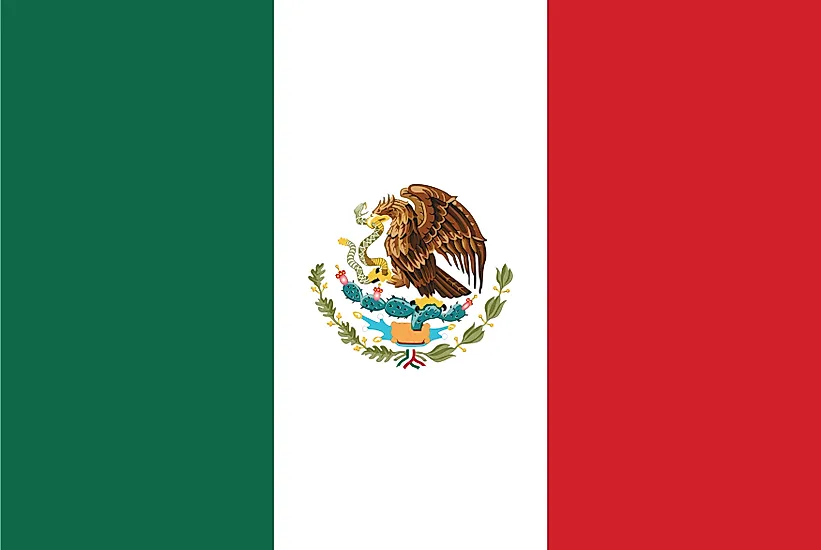
Mexico
| Continent | Americas |
| Capital | Mexico City |
| Population | 123,166,749 |
| GDP | $2.31 Trillion |
| GDP per Capita | $18,900 |
| Dialing Code | +52 |
| ISO Code (2-letter) | MX |
| ISO Code (3-letter) | MEX |
Mexico Landscapes






About Mexico
Welcome to Mexico, a nation where pre-Hispanic heritage meets contemporary dynamism. With approximately 128 million people occupying 1.97 million square kilometers, Mexico combines remarkable cultural diversity with stunning landscapes, standing as Latin America’s most populous Spanish-speaking country.
Geographic Features and Natural Beauty
Mexico’s geography encompasses extraordinary diversity, from desert landscapes to tropical rainforests. The country features two major mountain ranges – the Sierra Madre Oriental and Occidental – while the high central plateau contains most of its population centers.
The landscape includes the Sonoran and Chihuahuan deserts in the north, the Yucatán Peninsula’s limestone plains, and the volcanic belt across central Mexico, including Popocatépetl and Iztaccíhuatl. The country’s varied topography creates multiple climate zones supporting rich biodiversity.
Protected areas include numerous biosphere reserves and national parks, preserving ecosystems from coral reefs to cloud forests. The Monarch Butterfly Biosphere Reserve hosts one of nature’s most spectacular migrations.
Cultural Heritage and Traditions
Mexican culture represents a rich fusion of indigenous and European traditions. The country’s heritage includes remarkable archaeological sites from various pre-Hispanic civilizations, colonial architecture, and vibrant contemporary arts.
Traditional arts include distinctive pottery, textiles, and folk art, particularly alebrijes (colorful sculptures) and Huichol beadwork. Music traditions range from mariachi to regional folk styles, while dance forms express cultural identity through movement.
Mexican cuisine, recognized by UNESCO as Intangible Cultural Heritage, features diverse regional variations of iconic dishes like mole, tacos, and tamales. The tradition of festivals, particularly Day of the Dead celebrations, remains central to cultural life.
Historical Journey
Mexico’s history spans from ancient Olmec civilization through Aztec and Maya empires to Spanish colonization and independence. The country’s territory includes some of the world’s most significant archaeological sites.
Significant periods include the rise and fall of Teotihuacan, the Aztec Empire, Spanish colonial rule, independence in 1810, the Mexican Revolution, and modern democratic development. The country’s rich historical legacy continues to influence its cultural identity.
Modern Economic Landscape
Today’s Mexican economy is Latin America’s second-largest, combining manufacturing strength with rich natural resources. The country has developed significant industrial capacity while maintaining traditional sectors.
Recent initiatives focus on technological innovation, renewable energy development, and strengthening international trade relationships. Mexico’s strategic location and skilled workforce support its position as a global manufacturing hub.
International Relations and Global Position
Mexico maintains active participation in various international organizations while serving as a bridge between North and Latin America. The country’s economic and cultural influence extends globally through trade agreements and cultural exchange.
Did You Know?
• Mexico City is built on the ruins of Tenochtitlan, the ancient Aztec capital?
• The country has the world’s largest Spanish-speaking population?
• Mexican cuisine’s preparation techniques date back to pre-Hispanic times?
• Mexico is home to 68 indigenous languages still spoken today?
Conclusion
Mexico represents a unique combination of ancient heritage and modern vitality. From its archaeological treasures to its industrial might, from its traditional customs to its contemporary arts scene, Mexico continues to evolve while preserving its rich cultural identity. As it addresses challenges including sustainable development and social equality, Mexico remains committed to its role as a cultural and economic powerhouse while fostering innovation and growth.